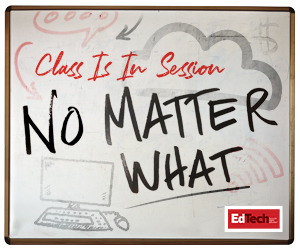Focus on Student Engagement and Success This Year
It’s evident that student engagement is critical to student learning and success. Kristin Kipp, chair of education media design and technology at Rocky Mountain College of Art + Design, and Kerry Rice, a professor in the department of educational technology at Boise State University, write at EdSurge that engaged learners “demonstrate stronger satisfaction with learning experiences, stronger achievement in courses and increased graduation rates.”
Kipp and Rice also explain that learning environments where fostering relationships, productive instructional strategies and social and emotional development is supported are where the deepest engagement happens. But with fewer face-to-face interactions, limited hands-on work and collaboration and an unfamiliarity with how online classes work, many students may feel isolated and disconnected from their instructors and peers during remote learning.
Meanwhile, existing inequities in higher education will likely worsen in the coming years.
The University of Texas at San Antonio’s Urban Education Institute offers a snapshot of what future college students are thinking today. According to the institute’s survey of participating San Antonio schools, 54 percent of high school students said their lessons were less engaging during remote learning. Meanwhile, 64 percent of high school students and parents of younger students reported that less learning occurred compared with pre-pandemic schooling.
Data from the Education Week Research Center also suggests that K-12 students in high-need neighborhoods are more at risk for academic decline. “The picture is very uneven. Not all of our kids are getting access to the same things,” Michael Casserly, executive director of the Council of the Great City Schools, tells Education Week.
To make matters worse, the “COVID-19 slide” suggests that elementary and middle school students will be substantially behind in academics, particularly in mathematics.
What does this mean for higher education? Universities and colleges will need to prepare extensive student success and retention programs to meet the needs of these higher-risk students in the coming years.
MORE ON EDTECH: Learn how to increase college success for underserved students.
How to Boost Student Engagement This Fall
Effective professional development is key to enhancing student engagement. Since remote learning is not the same as in-person instruction, educators will need to approach it differently. However, many still face hurdles when teaching with technology. In one study, just 44.5 percent of surveyed faculty at higher education institutions teaching primarily online in the fall said they felt “very confident” in their readiness to teach in the fall. And only 24.5 percent said they felt very confident in teaching in the HyFlex, or hybrid flexible model, this fall.
University leaders will need to ensure instructors have high-quality PD opportunities and technology training now and throughout the school year. These opportunities should not be limited to Google Classroom or Zoom tutorials. They should show faculty critical skills, such as how to best carry out online and blended learning strategies, build positive and supportive relationships with students from a distance, and use technology intentionally and safely.
At the end of the day, there isn’t a magic formula for improving student engagement during remote learning. It will take multiple strategies, cross-departmental teamwork, a whole lot of flexibility and, of course, time. But by being strong proponents of equitable access to devices, internet connections and high-quality professional development, higher education leaders can help make remote learning better for students and faculty this school year.
Correction 9/14/20: An earlier version of this article identified Kristin Kipp as the chair of education at Rocky Mountain College of Art + Design. She is the chair of education media design and technology.
This article is part of EdTech: Focus on Higher Education’s UniversITy blog series.











